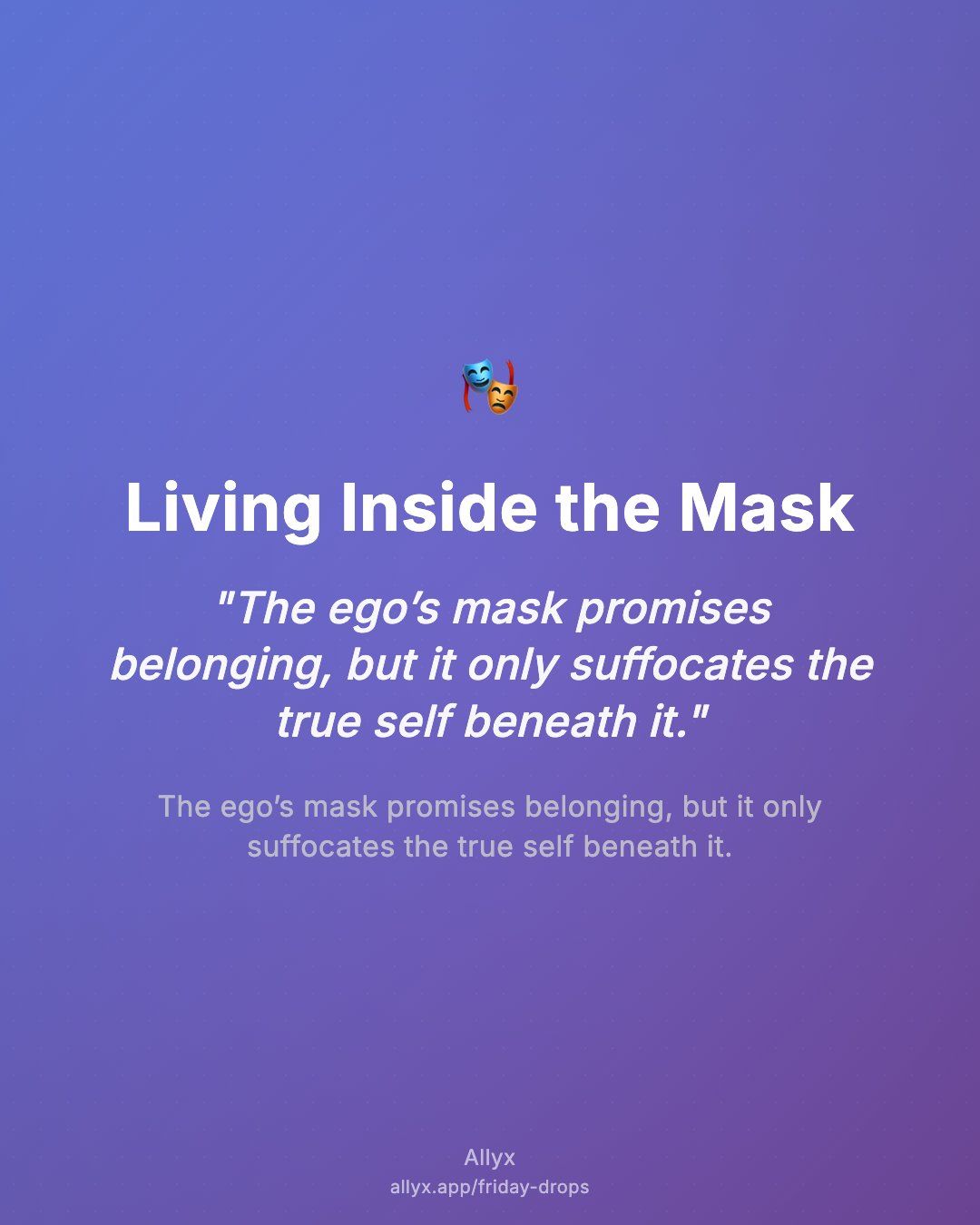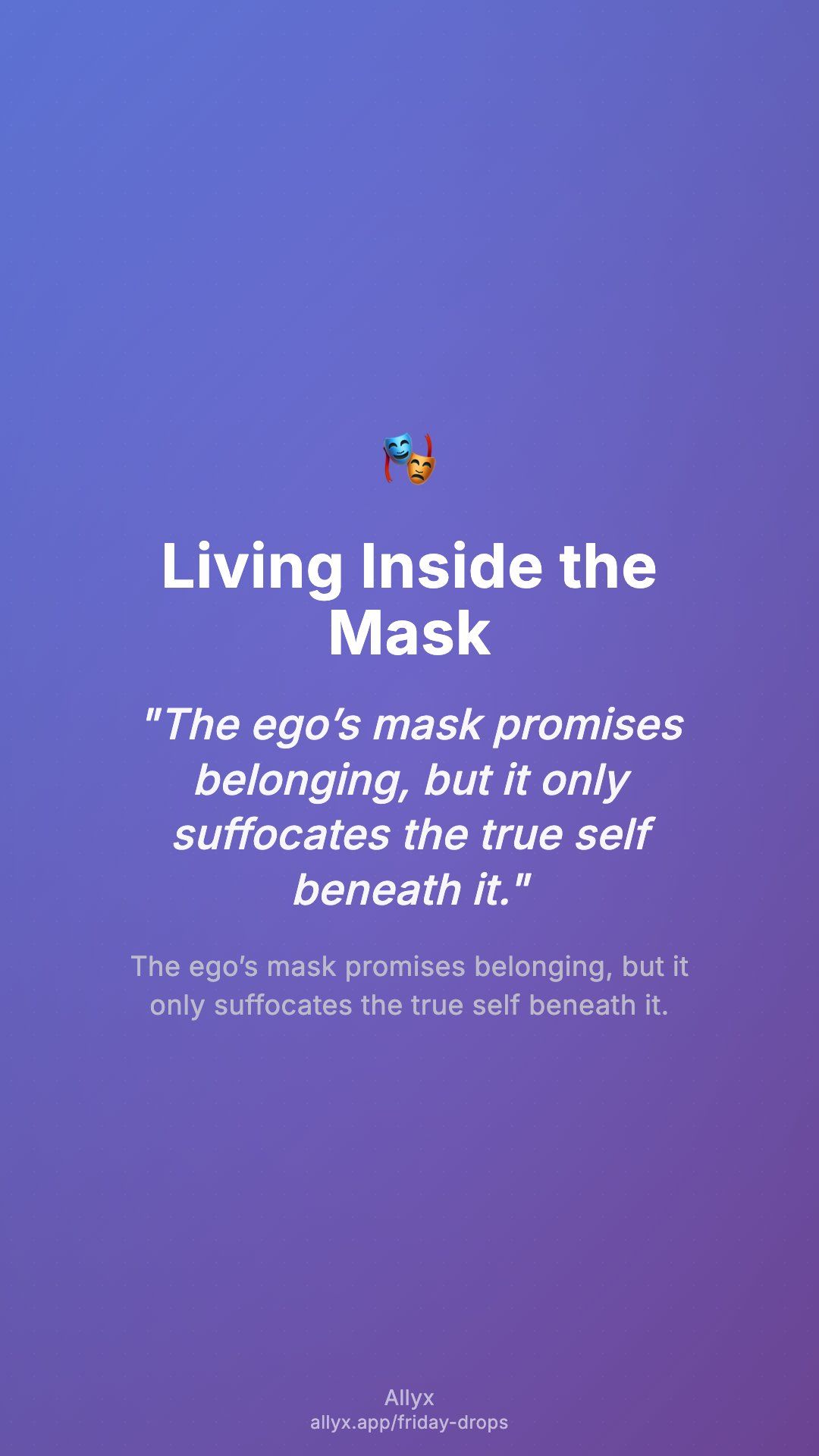Living Inside the Mask
The ego’s mask promises belonging, but it only suffocates the true self beneath it.
Sunday, August 31, 2025
Metaphorical Narrative
A porcelain mask covers the face. Painted with a perfect smile, flawless features, and glittering detail, it draws applause in every room. Yet inside, the person gasps for air. The mask is sealed so tightly that even breathing feels like work. Each movement is a performance. Each silence, a lie. The applause grows louder while suffocation grows worse.
Core Insight
Wearing a mask creates what psychology calls “self-discrepancy”: the gap between the actual self and the “ideal” or “ought” self that ego insists you must project. Research shows this gap is fertile ground for anxiety and depression, because the brain lives in constant tension between who you are and who you think you should be. Every interaction becomes performance, every silence becomes calculation.
Carl Rogers described this as incongruence: when your inner self and outer self diverge, the result is fragmentation of well-being. Congruence — being the same person in and out — is a psychological requirement for long-term stability. Masks feel like protection, but they suffocate authenticity and drain cognitive energy.
The identity trap says: “You are the mask, not the person underneath.” But in Observer Mode, you see the mask for what it is — a brittle shield, not your essence. Identity shift means reclaiming congruence: living as the unmasked self, whole and sovereign, even when applause fades.
Saturday Experiment
- Pick one conversation today where you remove the mask — no performance, no polish.
- Notice the tension and the relief that follows.
- Write down what shifts when you are not acting.
Sunday Reflection
Write in third person:
- Where does this person perform most in life?
- What would happen if they left the mask behind for one day?

